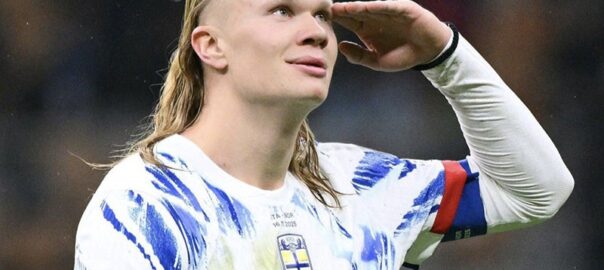Erling Haaland has driven his nation back onto the global stage, guiding Norway to their first major event in over twenty years. The Manchester City forward has delivered extraordinary numbers throughout the qualifying phase, striking sixteen times across eight fixtures and registering at least one finish in every match. His output puts him above every scorer across all confederations for this cycle.
The 25-year-old’s double in the crucial win away to Italy sealed their passage and wrapped up a campaign defined by his ruthless finishing. Speaking afterward, Haaland admitted that the path involved significant expectation, but he expressed relief mixed with enjoyment as the objective was fulfilled.
His contribution builds on an already remarkable international record. With fifty-five goals from forty-eight appearances, he joins a very small group who reached fifty strikes before fifty caps. Haaland has also surpassed Norway’s long-standing scoring leader, whose total stood for nine decades.
Yet the squad is far from dependent on a single figure. Captain Martin Ødegaard has orchestrated play with distinction, providing more assists than any other player in Europe’s qualifying series. The midfield creator, debuting as a teenager, has become a central influence in a side that finally complements its headline talents.
A long-awaited return to the global stage
Norwegian supporters will soon experience something that has eluded them for a generation. Their men’s team last graced a major competition at Euro 2000, with earlier World Cup appearances arriving in 1938, 1994, and 1998. For Haaland, the achievement holds particular meaning, as his father played in the 1994 edition.
Erling has comfortably exceeded his father’s club career, securing major honors in England, Germany, and Austria, and lifting a Treble with City. The World Cup remained the final milestone that Alf-Inge held over him, making this breakthrough especially significant for the family.
For many in Norway, the dominant feeling is relief rather than unrestrained celebration. Previous years produced talented individuals at prominent clubs, yet qualification repeatedly slipped away. The current generation, however, has fulfilled expectations and brought the national side back to tournaments they feel they should consistently reach.
The presence of elite stars has helped, but the broader structure has also stabilized. Observers compare the squad profile to that of Wales’ famed Euro 2016 side, where marquee players thrived because of a dependable supporting cast. Norway’s group now shows a similar balance across the pitch.
Haaland’s standing at home and avoiding an unwanted legacy
Within Norway, Haaland is viewed as a distinctive figure. His personality differs from the usual modest tone associated with Scandinavian athletes. Confident and direct, he embraces his stature and expects to play a central role, contrasting with earlier national icons known for humility and patience.
This divergence makes him a compelling, if unconventional, symbol for supporters. Occasional criticism may surface due to his manner, yet pride overwhelmingly defines the public view. Many appreciate that a player operating at such a rare level represents their country.
By reaching the upcoming World Cup, Haaland escapes the fate of several historic greats who never appeared on the sport’s biggest stage. Some legendary names from Europe, South America, and Africa missed the event entirely for various reasons, from national struggles to injuries or restrictive selection rules. Norway’s qualification ensures the City striker will not join that list.
This achievement also underscores what his era means for a nation of just a few million people. For many, the presence of both an elite forward and a top-class creator at the same time feels extraordinary—and possibly unrepeatable within a lifetime.
